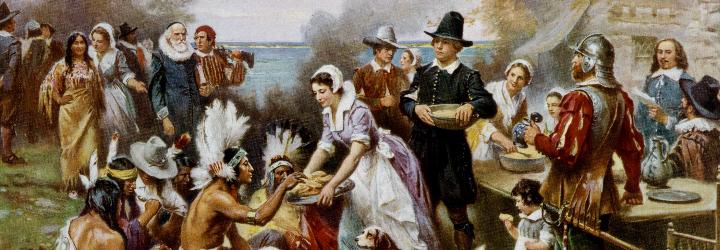Thanksgiving is upon us, and next to the fastidious references to pumpkin spice lattes and the like, the reference that we perpetuate and perhaps look forward to is that of the classic Thanksgiving postprandial somnolence.
Postprandial
Origin: Latin, post- (after) + prandium (meal)
After a meal, especially dinner
Somnolence
Origin: Latin, somnus (sleep)
Now, what is the soporific agent responsible for sending us on our merry way to the arms of Hypnos? Most people would tell you that copious amounts of tryptophan are responsible. Tryptophan is one of the 20 amino acids that are used to synthesize proteins in our bodies, and it is said to be abundant in turkey meat.
Tryptophan was first isolated in 1901 by Frederick Gowland Hopkins through the hydrolysis of casein; casein is one of the proteins that are abundant in milk. (Interesting aside: casein has an affinity for the molecule capsaicin, which is found in chili peppers. This is why dairy products neutralize the spice from peppers.) Hopkins conducted an animal study in which he removed tryptophan from the diets of mice. He found that tryptophan was necessary for the mice to grow, and concluded that tryptophan is one of the “essential” amino acids, i.e., it must be obtained through the diet. In 1912, he conducted another animal study in which he supplied mice with pure proteins, fats, carbohydrates, and minerals. He found that the mice did not grow, and postulated that there exist unidentified “accessory food factors” necessary for growth and survival. These “accessory food factors” are better known to us now as vitamins, and for this realization, Hopkins was awarded the Nobel Prize in Physiology or Medicine in 1929.
Now, regarding tryptophan: where does the word come from? Let’s start with some etymology:
Tryptophan
Origin: Greek, trypsin (digestive enzyme) + phanein (to show)
Something that is shown when trypsinized
Thus, tryptophan is so named because it is “shown” (produced) when proteins are digested with the enzyme trypsin. The etymology behind trypsin is rather cool as well:
Trypsin
Origin: Greek, tribein (to rub)
So named because it was first obtained with rubbing the pancreas
Anyways, it turns out that tryptophan is not the agent responsible for the ol’ Thanksgiving food coma. It has been shown that chicken and beef contain similar quantities of the amino acid. Instead, it is the large amount of carbohydrates ingested through classic Thanksgiving dishes such as mashed potatoes, yams, stuffing, etc. I won’t bore you with the posited mechanisms behind this, but there are a number of online resources that could fill you in if you so choose. Let us part with another fun Thanksgiving etymology:
The Banquet of Acholeus by Rubens (1577-1640)
(Heracles fought against Acholeus for the hand of Deianeira, and when Acholeus transformed himself into a bull, Heracles took one of his horns. Acholeus offered him the horn of the goat Amalthaea, and Heracles in turn gave it to the Naiads who transformed the horn into the cornucopia)
Cornucopia
Origin: Latin, cornu (horn) + copia (wealth)
Horn of wealth, taken to mean horn of plenty
In classical mythology, it was an infinite source of food and drink from the goat Amalthaea
And thus I wish you all a Happy Thanksgiving, and may it be filled with a cornucopia of food, family, and fun.









